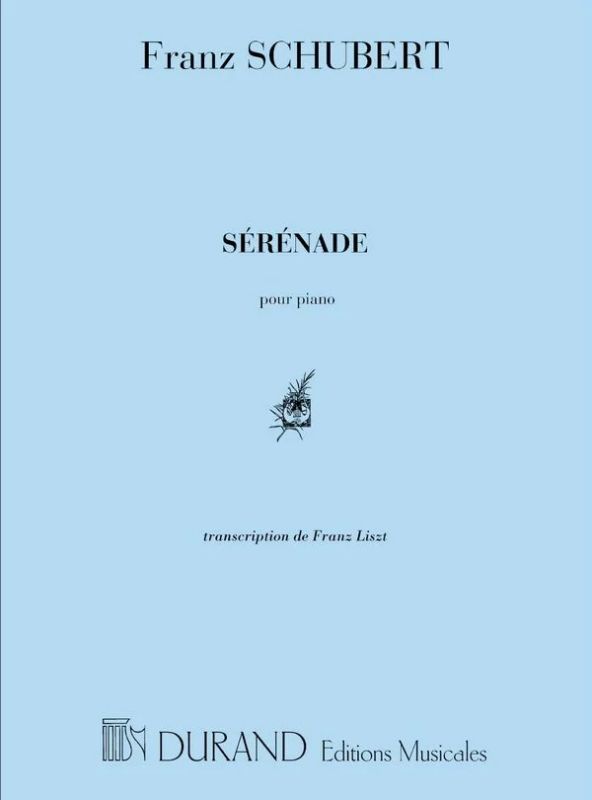

“Ständchen” has been arranged for various instrumental combinations, including Franz Liszt‘s transcription for solo piano, published by Diabelli in 1838 as no. 8 from Zwölf Lieder von Franz Schubert, S558) Liszt. Notes scan: score scanned at 600dpi filter: score filtered with 2-point algorithm explained in High Quality Scanning.I provide the original scanned version and the filtered, because the filter does some changes (smoothening, sharpening borders) and some portions of the scan get lost sometimes (when they are too small e.g.) - so you can choose your favorite. 3 from Zwölf Lieder von Franz Schubert, S558) Liszt: Erlkonig, S557a Liszt: Gretchen am Spinnrade (No. 6 from Zwölf Lieder von Franz Schubert, S558) Liszt: Du bist die Ruh (No. As others have pointed out, and as Furness in his ‘ Variorum Edition’ of Cymbeline makes abundantly clear, “This present song is the supreme crown of all aubades…” The Schirmer edition of Liszt’s transcription for solo piano clarifies the context with the title of Morgenständchen (morning serenade), and the German title of Schubert’s song would be more accurately rendered in English as Aubade. 11 from Zwölf Lieder von Franz Schubert, S558) Liszt: Die junge Nonne (No.

The German word Ständchen is unspecific about the time of the homage. Marc-André Hamelin performs Franz Liszt piano arrangement of Franz Schuberts famous, sad song from Schwanengesang, Ständchen, at the same concert where he p. Schlegel and Johann Joachim Eschenburg – in a collected Shakespeare edition of 1811. The song in its original form is relatively short, and two further verses by Friedrich Reil were added to Diabelli’s second edition of 1832.Īlthough the German translation which Schubert used has been attributed to August Wilhelm Schlegel (apparently on the basis of various editions of Cymbeline bearing his name published in Vienna in 18), the text is not exactly the same as the one which Schubert set: and this particular adaptation of Shakespeare had already been published as early as 1810 as the work of Abraham Voß, and again – under the joint names of A. W. The song was first published by Anton Diabelli in 1830, two years after the composer’s death. It is a setting of the “Song” in act 2, scene 3 of Shakespeare‘s Cymbeline. “ Ständchen” (known in English by its first line “ Hark, hark, the lark” or “Serenade”), D 889, is a lied for solo voice and piano by Franz Schubert, composed in July 1826 in the then village of Währing. Liszt – “Ständchen” Piano Transcriptions After Schubert – Khatia Buniatishvili (with sheet music in our Library)


 0 kommentar(er)
0 kommentar(er)
